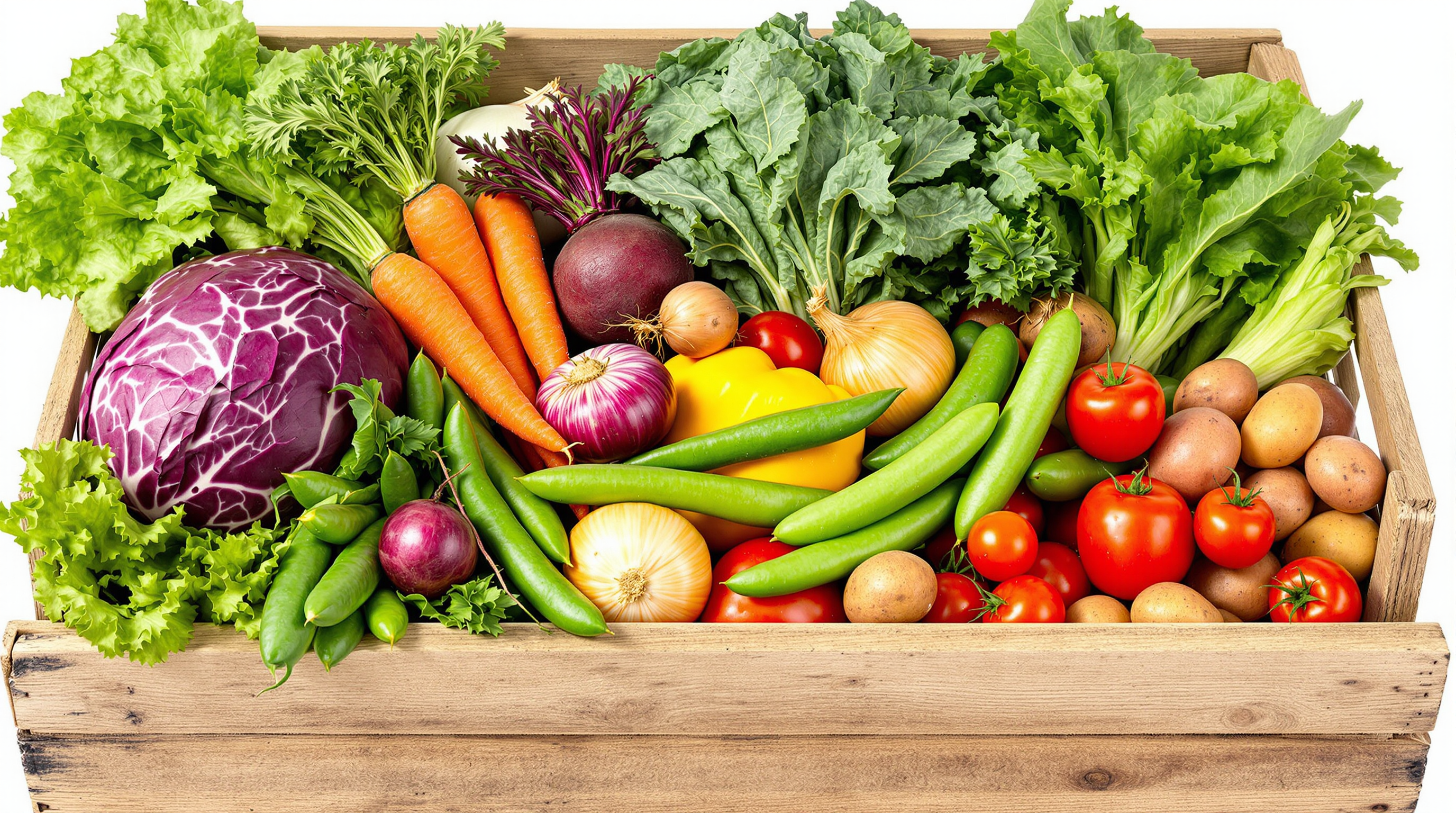Vegetables you should always grow form the backbone of any productive home garden. These aren’t just random plants—they’re carefully selected champions that deliver maximum results with minimum effort. What separates exceptional gardeners from the rest isn’t fancy equipment or perfect soil—it’s knowing which vegetables consistently perform season after season. Based on Mark’s extensive experience from Self Sufficient Me, these ten vegetables stand out for their ease of growing, versatility, productivity, health benefits, and flavor profile.
- Lettuce – The Effortless Green
- Carrots – Underground Treasures
- Cabbage – Year-Round Wonder
- Beetroot – The Colorful Superfood
- Onions – The Foundation Vegetable
- Cucumbers – Cool and Crisp
- Peas and Beans – Protein-Packed Powerhouses
- Tomatoes – The Garden Star
- Potatoes – The Ultimate Staple
- Planning Your Vegetable Garden
- Conclusion
Lettuce – The Effortless Green
Why Lettuce Deserves Garden Space
Experienced gardeners often joke about lettuce’s remarkable adaptability—many can’t even get rid of it once established, with volunteers popping up in lawns and between pavers. This leafy vegetable thrives in most conditions and keeps producing with minimal attention. Home vegetable garden enthusiasts appreciate lettuce for its quick turnaround—many varieties ready to harvest in just 30 days.
Lettuce delivers exceptional hydration while remaining extremely low in calories. It’s not just a salad base but what gardeners call a “maker food” that elevates everything from sandwiches to tacos. Think about an egg sandwich—the egg might be the star, but the lettuce makes it complete. The same goes for shredded lettuce in tacos or as the base of a prawn cocktail with island sauce.
For beginners, lettuce forgives most gardening mistakes. Plant successive small batches every two weeks rather than one large planting for continuous harvests throughout the growing season.

Carrots – Underground Treasures
The Versatile Root Vegetable
Carrots exemplify low-maintenance crops with their wide temperature tolerance and extended harvest window. Their adaptability allows them to be grown in many climates year-round, making them ideal for gardeners in various growing zones.
While the “improves eyesight” claim might be exaggerated, experienced gardeners note that carrots do contain lutein and beta-carotene that support eye health. Their dense nutritional profile delivers significant value per square foot of garden space.
Different varieties offer unique benefits—French carrots mature quickly in shallow containers, while longer varieties store well for winter use. Seasoned gardeners have observed that even a few standard-sized carrots or several small French varieties are enough to feed a family. The productivity is remarkable—many gardeners report planting carrots and still harvesting from the same patch four months later.

Cabbage – Year-Round Wonder
Mini Cabbages for Maximum Results
Cabbage demonstrates how self-sufficient gardening creates tangible health benefits. One gardener shares a compelling story about learning that women who regularly eat cabbage showed lower rates of heart disease in a university study—knowledge that immediately changed eating habits in his household.
For space-conscious gardeners, mini cabbage varieties offer full flavor without the extended growing time of larger heads. One small cabbage still provides enough for family meals or preservation projects like sauerkraut.
Cabbage grows best with consistent moisture and benefits from companion planting with aromatic herbs that deter common pests. The outer leaves can be harvested individually while the head continues developing—maximizing your harvest from a single plant.
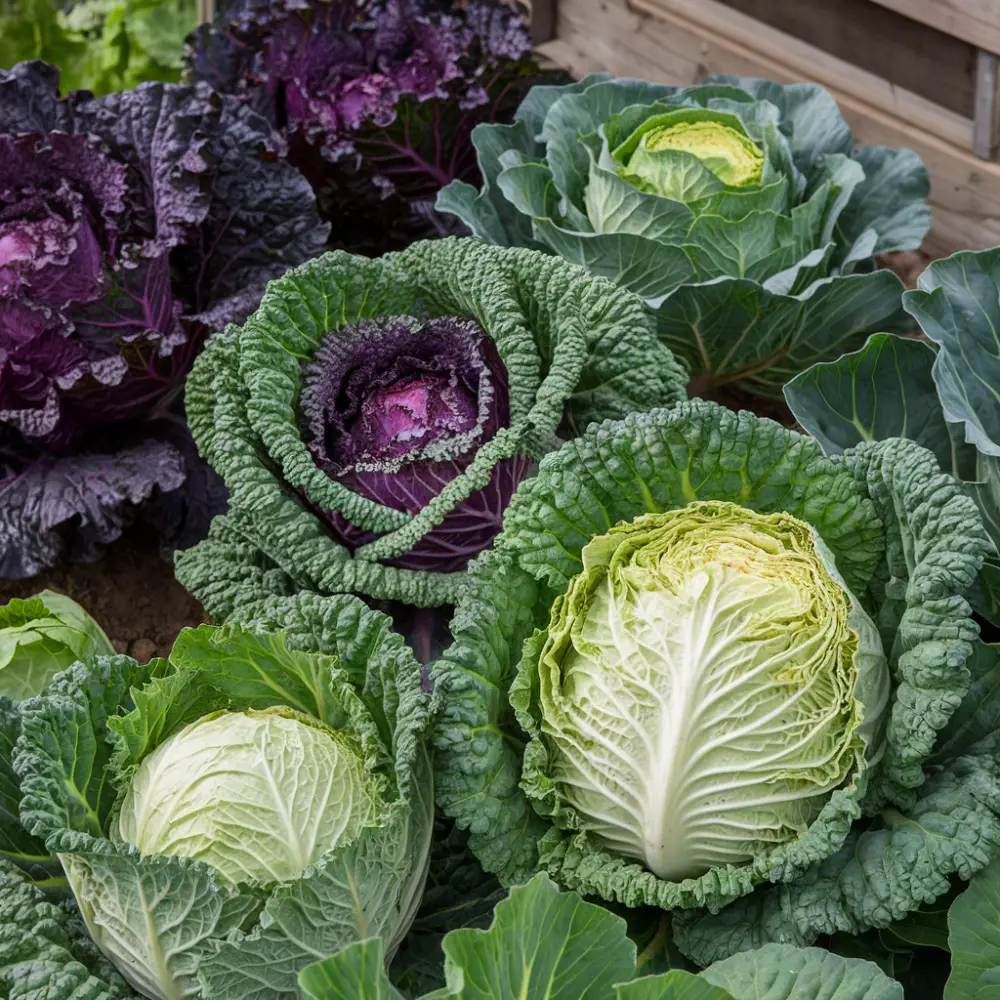
Beetroot – The Colorful Superfood
Double-Duty Vegetable
Many gardeners consider beetroot preserved in a mix of sugar and vinegar to be the perfect way to enjoy this versatile vegetable. Beyond pickling, beets offer remarkable versatility—roasted, grated raw, juiced, or even baked into chocolate cakes.
Beets deliver exceptional nutritional density with potential cancer-fighting properties. Their fiber content supports digestive health while remaining low in calories and fat.
The often-overlooked beet greens provide a bonus harvest—use them exactly as you would spinach or chard. This nutrient-dense vegetable essentially provides two crops in one, maximizing garden productivity. Experienced gardeners note that while some friends dislike beetroot, they’re missing out on a confirmed superfood packed with vitamins and minerals.

Onions – The Foundation Vegetable
From Spring Onions to Storage Varieties
Gardeners often observe that onions are practically in everything from sauces to sausage sizzles. Few ingredients transform more dishes than properly grown onions with their complex sweetness and depth.
The health benefits extend beyond flavor—onions help regulate blood sugar, strengthen bones, lower cholesterol, and support immune function. Their antibacterial properties even help inhibit harmful stomach bacteria.
For small spaces, spring onions grow almost anywhere—even in water glasses on windowsills. Storage varieties cure for extended shelf life, providing flavor throughout winter months when fresh garden produce becomes scarce. As one gardener humorously notes, you’ll only ever eat an onion like an apple once, but a good pasta sauce or sausage sizzle is never the same without it.
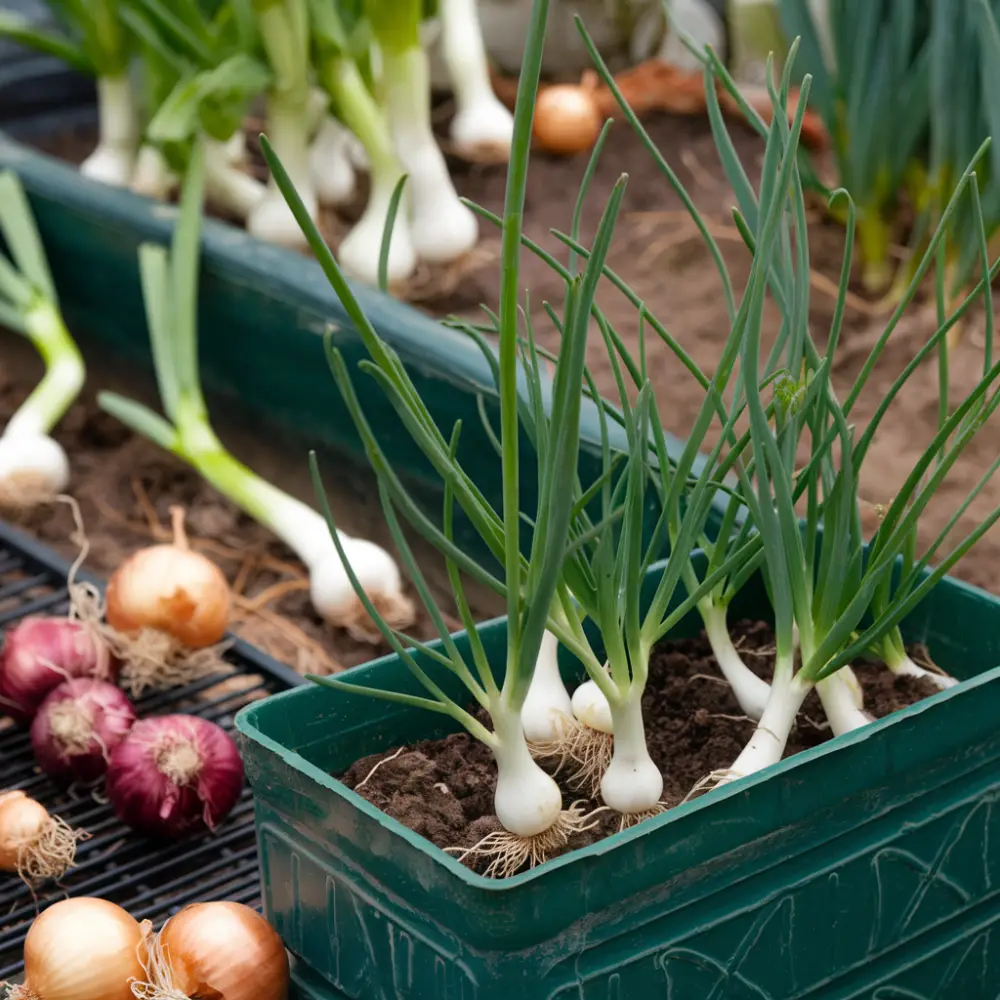
Cucumbers – Cool and Crisp
The Refreshing “Fruitable”
Experienced gardeners playfully call cucumbers “fruitables” since they’re botanically fruits but culinary vegetables. Their 96% water content makes them exceptional for hydration and weight management with zero fat content.
There’s truth behind the saying “cool as a cucumber”—gardeners note that studies have found the internal temperature of cucumbers is actually cooler than the outside temperature on warm days. This makes them perfect refreshing snacks during summer gardening sessions.
Beyond fresh eating, cucumbers transform through fermentation and pickling into probiotic-rich foods with enhanced health benefits. Organic vegetables like home-grown cucumbers avoid the wax coatings found on commercial varieties. Trellising varieties grow vertically to maximize space, while bush types work well in containers for small gardens.
Gardeners with digestive issues particularly value cucumbers—their high water content and fiber make them excellent for maintaining regularity. As one gardener puts it, “If you’re chocker up the blocker, eating cucumbers can help you get regular again.”

Peas and Beans – Protein-Packed Powerhouses
Easy Growing, High Yielding
Few vegetables match the protein content of properly grown peas and beans. These garden staples fix nitrogen in soil, essentially fertilizing themselves while improving ground for future crops.
Experienced gardeners report impressive yields—one gardener’s snow pea row produced five kilograms from a single planting. Both freeze well for winter use, and dried beans store indefinitely.
Beans contain complete protein profiles with fiber and B vitamins supporting brain and nerve function. Their forgiving nature regarding soil quality makes them perfect for beginner gardening projects. As one gardener humorously notes, you might want to be alone if all you ate was beans, as “blaming the dog could become a little tiresome.”
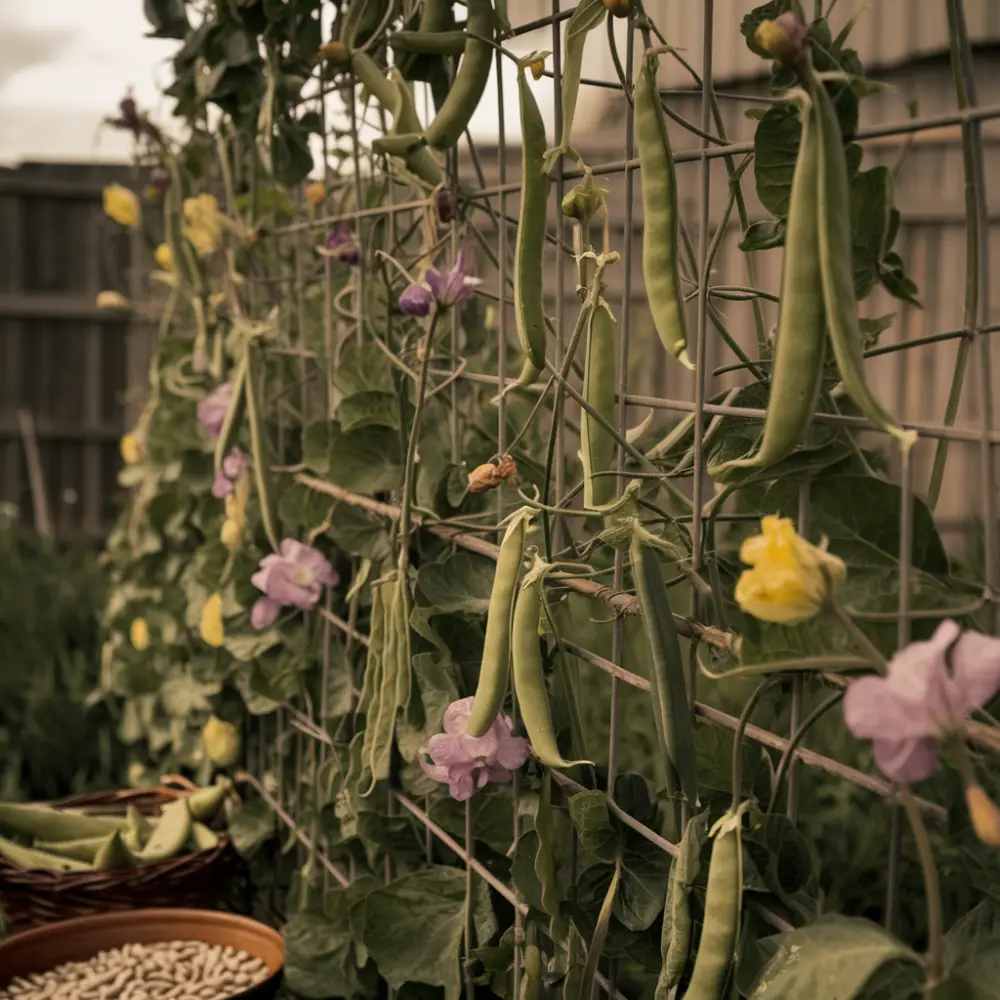
Tomatoes – The Garden Star
Heirloom Varieties for Superior Taste
Many passionate gardeners admit their personal bias toward tomatoes—if allowed to choose just one vegetable to grow forever, tomatoes would top their list. Few vegetables inspire such devotion among gardeners—and with good reason. Heirloom varieties deliver flavors and textures impossible to find in stores.
Tomatoes actually increase certain nutritional benefits when cooked—their lycopene becomes more bioavailable. This powerful antioxidant helps protect against cancers and age-related degeneration.
For those struggling with larger varieties, cherry tomatoes offer foolproof alternatives that often self-seed for subsequent seasons. Their concentrated flavor elevates everything from salads to sauces. Dedicated gardeners report barely a day passing without eating tomatoes in some form—a fortunate habit given their exceptional health benefits.
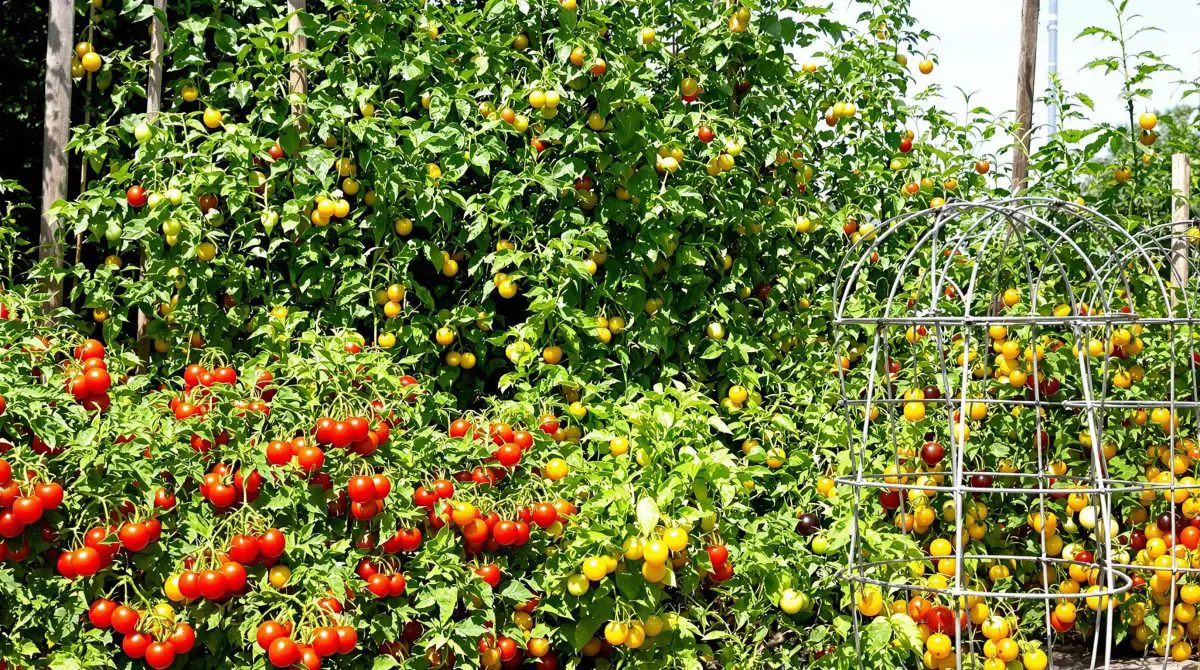
Potatoes – The Ultimate Staple
Beyond French Fries
Potatoes earn their place as many gardeners’ top recommendation through unmatched versatility and caloric density. Growing them is remarkably simple—just place a potato in soil and dig it up three months later to find it multiplied.
Despite their carbohydrate content, potatoes provide complex carbs rather than simple sugars. They contain more potassium than bananas and significant fiber when eaten with skins intact.
Year-round harvests become possible by planting early, mid-season, and late varieties. Their storage capability extends the harvest for months without preservation methods. As one gardener humorously observes, without potatoes, “you would only have half a meal at McDonald’s.”
Experienced gardeners challenge anyone to find a better-tasting vegetable, especially when growing varieties not available in supermarkets. Home-grown potatoes have prevented starvation throughout history due to their nutrient density and ease of cultivation.

Planning Your Vegetable Garden
Combining these ten vegetables creates a remarkably productive garden with staggered harvests throughout the growing season. Interplanting quick crops like lettuce between slower-growing vegetables maximizes space efficiency.
For space-saving garden designs, consider vertical elements for cucumbers, peas, and beans while root crops utilize the ground below. Container options work for nearly all these vegetables when in-ground space isn’t available.
The beauty of these selections lies in their complementary growing seasons—as one crop finishes, another reaches peak production, ensuring continuous harvests.
Conclusion
These ten vegetables consistently outperform others in home gardens through their resilience, productivity, and nutritional value. They form the foundation of self-sufficient gardening while requiring minimal specialized knowledge.
Start with just three if you’re new to gardening—perhaps lettuce, cherry tomatoes, and beans. Add others as your confidence grows. The satisfaction of growing even a portion of your own food creates a connection to your meals impossible to achieve through store-bought produce.
What’s Your Garden Must-Have?
Do you agree with this list of ten vegetables that should always be grown? Which would you add or remove? Would you rearrange the ranking? Share your garden must-haves in the comments below—we’d love to hear which vegetables have proven most valuable in your garden!
Additional Topics Worth Exploring
- Drought-resistant varieties of these vegetables for water-conscious gardening
- Vertical growing systems for small-space vegetable production
- Season extension techniques for year-round harvesting
- Soil-free growing methods for urban environments
- Heritage seed saving from these vegetables for true self-sufficiency

